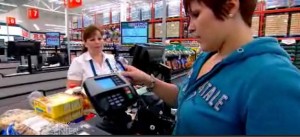Idaho’s Food Stamp Rolls Nearly Triple in Four Years

Rock Center / NBC
On Rock Center with Brian Williams this week, a Nampa woman went grocery shopping in the middle of the night, when her monthly food assistance money was deposited.
Two families from Nampa were featured in an NBC piece this week about the high demand for food assistance and the rush to purchase food on the first of the month, when money is deposited into recipients’ accounts. What the piece doesn’t detail is the number of Idahoans enrolled in the Supplemental Nutrition Assistance Program (or SNAP, formerly known as food stamps), and how much that number has grown in recent years.
According to this study from the Urban Institute, Idaho saw its SNAP enrollment go up by 123 percent between 2007 and 2010. Idaho’s increase in SNAP rolls was second only to Nevada’s, where use of the program grew by 128 percent over the same period.
Idaho Department of Health and Welfare spokesman Tom Shanahan confirms that Idaho has watched demand for SNAP benefits rise steadily, month by month, since September 2007. State enrollment totaled 87,232 that month. In September of this year, it stood at 234,523, an increase of nearly 170 percent.
Idaho’s current enrollment is roughly 15 percent of the state’s total population, in line with the percentage of people who receive SNAP benefits nationwide. The Department of Health and Welfare’s Shanahan says Idaho’s increase is probably due the the fact that the state historically has had a low rate of enrollment, compared to the national average. “Our thought is that, in the past, people found a way to get by,” he said. “It could be family, their church or a small food pantry. They always found a way to get by.” Now, he says, perhaps fewer of those supports are available.
That’s not the only shift Idaho has seen, with respect to use of SNAP benefits. Food stamp use in the state used to be cyclical. It waxed and waned according to the availability of seasonal jobs. “Use would go down in the spring and up in the fall,” Shanahan said. Now it only climbs. “There’s not any kind of cycle anymore except up,” he said.
